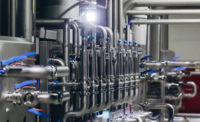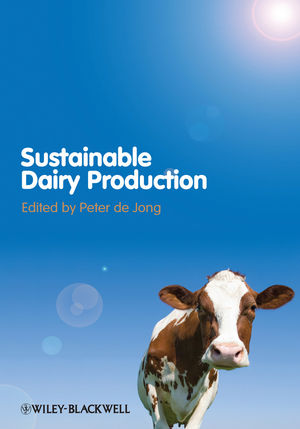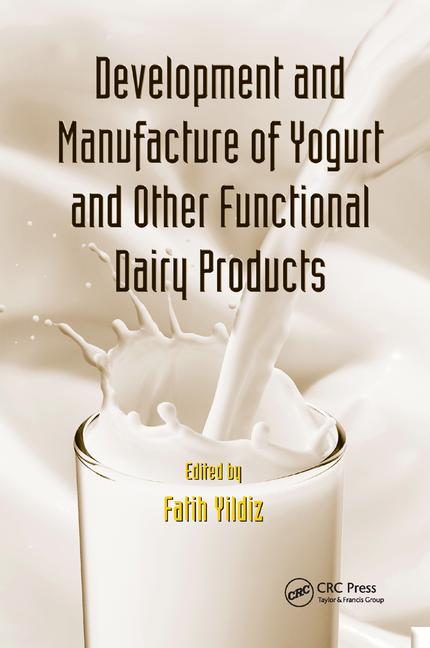Fluid motion
How to choose the right pumps and valves
Efficiency in a dairy plant is greatly improved with the proper selection of pumps and valves. We asked experts to talk about the importance of automation, flexibility, avoiding production loss and reducing energy costs.

Pentair Südmo DSV complete mix proof valve manifold; 262-725-9026, www.sudmona.com

Meyer Klean-In-place rotary airlock feeder; 800-963-4458; www.rotaryvalve.com

Ampco ZP3 positive displacement pump; 800-737-8671, www.ampcopumps.com

Osgood Industries tank-style pump; 813-792-4547, www.osgoodinc.com

Definox Mixproof PMO-C valve; 262-797-5730, www.definox.com

Alfa Laval Unique mixproof CP-3 valve; 866-253-2528, www.alfalaval.us

Burkert Element valve line; 800-325-1405, www.burkert-usa.com

Fristam Pumps FZX liquid ring pump; 800-841-5001, www.fristam.com/usa

Graco SaniForce 2:1 pneumatic piston pump; 877-844-7226, www.graco.com

GEA Tuchenhagen 24/7 PMO mixproof valves; 207-797-9500, www.gea.com










Dairy Foods invited leading suppliers of pumps and valves to talk about new innovations, cost cutting and best practices in dairy processing facilities. Here’s what they had to say about selecting the best pumps and valves in our virtual roundtable.
Dairy Foods: Processors want to produce dairy foods with minimal waste. They want to get the most from milk, ice cream mix, cheese curd, etc. How can processors use pumps and valves to control costs?
Russell Jones, global portfolio manager, Alfa Laval: Reduction in waste can be accomplished two ways: A. Reduced product damage makes the most of the raw materials and reduces product lost and quality problems. Low-shear pumps can greatly reduce product damage.
B. One of the most commonly wasted areas of the plant is energy. The use of high-efficiency pumps is one of the quickest and best ways to reduce energy costs. Using this type of pump is not the end of the story. Using a high-efficiency pump that’s applied badly in a system can still result in a huge energy loss. Alfa Laval has an extensive training and support program to assist and educate the dairy industry to optimize pump selection and to dramatically reduce energy cost.
Brian Armstrong, field segment manager, and Nancy Gay, area sales manager, Burkert Fluid Control Systems: Automation is the only way to go. The use of valves and pumps combined with decentralized automation of valves and monitoring of pumps through variable frequency drives coupled with the use of in-line instrumentation for flow, level and analytical measurement enables the automated plant to be competitive, control waste and increase yields.
Jonathan Viens, sales and marketing manager, Osgood Industries: In terms of filling dairy products into retail containers, processors need systems which balance distribution of product across all lanes and the ability to tweak individual lanes to optimize fill accuracy. Hopper and dispensing designs need to address this and be shaped as such to permit the use of the most product possible at the end of the run to reduce waste.
Chris Sinutko, product and aftermarket sales specialist, and Jim LeClair, global product manager, SPX Technology: Automated valve manifolds give plants not only greater capacity, minimized downtime for cleaning and increased production flexibility, but also greatly lower the probability of severe consequences, reduce the risk of product and personnel safety, and provide a record of activity if something harmful does happen so it can be corrected.
Valves with control tops are designed to monitor the valve seats to ensure they are properly seated in the blocked position before the cleaning system can be activated. Valves can also be selected to be normally closed to ensure it is in the safe (blocked) position during power failure. This all creates an automatic fail-safe system preventing contamination of the product with cleaning or sanitizing solutions.
Zach Suardini, application engineer, Fristam Pumps USA: The most basic way to get the most from your ingredients is to prevent loss during production and transfer. Much can be lost in milk receiving if tankers are not completely emptied.
The limitations of a traditional centrifugal pump prevent it from operating unless it is full of fluid. Near the end of a tanker unloading, air and foam are introduced into the fluid stream, which can cause a traditional centrifugal to airlock. Therefore, a pump that can handle entrained air is necessary.
Many dairies find success with a liquid ring pump, which can continue to draw fluid even when it contains air, and completely empty tanks and lines. It eliminates the wasteful practice of literally rinsing milk down the drain.
In dairy production, “gentle” product handling is a term tossed around to describe processing and conveying equipment. It is often hard to quantify. But in cheese curd production, there is a simple measure: fines. That is, how much curd is damaged to the point of not being usable. Positive displacement pumps with large capacities, slow rotation and tight internal clearances can reduce fines and increase curd yields. A cheese plant can save tens of thousands of dollars per year by choosing a gentle PD pump.
Dairy Foods :Demand for cheese and for yogurt, especially Greek-style yogurt, has processors adding lines or building new plants. Help them choose the right products. What should they look for when considering pumps and valves for a cheese plant? For a yogurt plant?
Jones: The key to success in pumping Greek yogurt is ensuring that the pump has the lowest possible product shear rate, and to ensure that the product is not damaged — while the product retains its desired texture and viscosity.
Armstrong and Gay: Processors are increasingly looking for standardization in automation control of valves, especially cross standardization between utility and hygienic. Look for valves that use automation to keep moisture out of their control tops and recycles it to optimize performance and reduce air consumption against other I to P technology.
Viens: While Greek and vat set blended yogurts dominate market place, cup set yogurt is still an ongoing requirement by some customers. Cup filler systems need to accommodate both process styles.
Yogurt makers today need to focus on other important factors: ever-increasing output requirements, consistent dispensing of product across all machine lanes, flexibility in terms of flavor SKUs and flexibility to minimize changeover times. Tank-style pumps have become an important solution to meet this demand.
Brian Romano, national sales director, GEA Tuchenhagen: Processing cheese and yogurt is a more difficult application than regular milk, so you want to look for high-quality, low-maintenance, easy-to-clean valves. Mixproof valves allow for 24/7 production because the seat cleaning occurs during production, while product is present on the other side of the valve. This allows for continuous processing and easier cleaning. The simple and hygienic design of the valves allows for the most effective cleaning.
Christophe Durupt, director of sales and business development, Definox: When people are using a valve or a pump to transfer products, those items are acting like an in-line mixer. Texture is destroyed and so is the value. Simple and double-seat valves, pigging stations and manifolds of valves give a guarantee to the customer that the money invested in creating texture and value to the product will be preserved.
Jeremy Hauser, technical manager, Pentair Südmo: The most important consideration for a cheese or yogurt producer when choosing a valve partner is to look at their industry experience.
Suardini: Pumping yogurt base requires a pump that can handle viscous products and provide low shear, such as a positive displacement pump. Shear can cause yogurt to separate once packaged. Yogurt processors save time and money with a design which allows them to CIP without disassembling the pump. This means everything, including rotors, stay in for CIP, eliminating downtime, parts damage, re-assembly error and contamination.
Dairy Foods: Processors are looking at the CIP process to minimize their use of water, which is another expense. What are some best practices in using valves and pumps?
Armstrong and Gay: In controlling waste and curbing water usage, decentralization of valves will enable you to do so. Pulsing of the solenoid valves in the control tops cleans the hygienic valve seats quicker with less water usage and less air consumption.
Suardini: A liquid ring pump maintains its prime when other pumps become air-bound. This feature, combined with its ability to produce a vacuum, makes it an excellent CIP return pump as complete removal of fluids is required. A liquid ring pump can pump CIP solution containing air. It replaces traditional centrifugal pumps and the need for air eliminators and check valves on the discharge. Processors no longer have to deal with caustic cleaning solution being discharged onto the floor. The pump requires less fluid to charge a system. It also reduces residual water and CIP solution left in lines and vessels and decreases soiling of wash water through better evacuation of pre-rinse.
Kevin Jagielski, director of sales and marketing, Graco: Processors can save time and money by utilizing drum unloaders or bin evacuation systems instead of manually scooping or dumping medium to high-viscosity products from containers. The evacuation time for a drum unloader is typically less than 10 minutes versus manual processes that can take over 30 minutes.
Processors may also see a significant amount of residual product left in the bottom and sides of their drums with manual scooping or dumping. A high-performing drum or bin unloader with an inflatable wiper seal has more than a 99% evacuation rate.
Mary Augustine, regional sales manager, Ampco Pumps: To help processors reduce down time and reduce water costs, we recommend a positive displacement pump. Its design has a front-loading seal which allows the seal to be changed without disconnecting the pump from the line. Its front-loading seal blocks product from entering the hard-to-clean hub area. The cleaning process requires less CIP velocity which saves water and uses less energy.
Viens: CIP time can be reduced by using tank-style pumps. There are no dynamic O rings to wash behind, fewer chambers, pipes to reach and the pistons and cut off stems retract into the hopper. This makes the system like a big dishwasher which simultaneously cleans the hopper, the piston cut off stems and nozzles together in parallel as opposed to a more sequential, multi-step CIP cycle where pistons are external to the hopper. This reduces CIP cycle time and saves water, chemicals, and downtime.
Dairy Foods: Discuss recent innovations from your company.
Christian Thommen, USA fluid handling product manager, Alfa Laval: The Alfa Laval Unique mixproof CP-3 valve has recently been added to the PMO mixproof valve portfolio. It’s a highly efficient, light-weight, reduced-vent mixproof valve, which is maintenance friendly and frees up valuable floor space. It was created with sustainability principles in mind. Customers can find increased performance and take advantage of water savings during CIP operations throughout the day.
Armstrong and Gay: The Type 8681 Universal Control Tops has a unique decentralized automation control at the valve source allowing for consistent standardization in the control of the process. The highly visible LED lights provide a visual indication on whether the valve is open or closed.
Jagielski: The SaniForce 2:1 pneumatic piston pump is the newest model in our line of sanitary transfer pumps for product evacuation out of pails, drums and bins. This pump can reach a fluid pressure of 200 psi and is ideal for medium viscosity materials (up to 50,000 cups) like flavorings, syrups and honey that are often added to dairy products like yogurt and ice cream.
Looking for a reprint of this article?
From high-res PDFs to custom plaques, order your copy today!



















